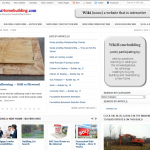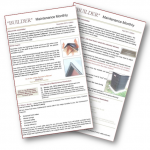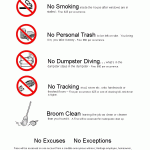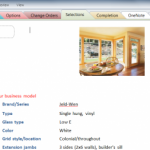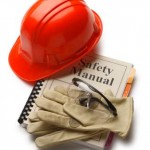BASEMENT, GARAGE & PORCH
Performance Standards: HBR articles 2-2, 2-3, 2-4, 2-6, 2-7 Click icon to view book 
Cracks should not exceed 1/4 inch in width or 3/16 inch surface displacement (3/16″ = 3 pennies).
Floors shall not have pits, depressions, or areas of unevenness exceeding 3/8 inch in 32 inches.
Garage floors shall not heave or settle more than 3/4 inch as measured from the center of a 36-inch diameter area. The floor shall not separate in excess of 3/4 inch from surrounding block.
Spalling (Top comes off in splotchy manner) is usually caused from salt, de-icing agents and/or mechanical implement. It could, however, occur under normal conditions of weathering and usage. CORRECTIVE MEASURE: NONE
Homeowner Operation and Maintenance
Cleaning – Avoid washing exterior concrete slabs with cold water from an outside faucet when temperatures are high and the sun has been shining on the concrete. The abrupt change in temperature can damage the surface bond of the concrete. We recommend sweeping for keeping exterior concrete clean. If washing is necessary, do this when temperatures are moderate.
Do not use soap on unpainted concrete. Instead, use plain water and washing soda or, if necessary, a scouring powder.
Cracks – A concrete slab 10 feet across shrinks approximately 5/8 inch as it cures. Some of this shrinkage shows up as cracks. Cracking of concrete flatwork also results from temperature changes that cause expansion and contraction.
As cracks occur, seal them by filling with a waterproof concrete caulk (available at hardware or home improvement stores) to prevent moisture from penetrating.
Expansion Joints – We often install expansion joints to help control expansion. However, cracking does not always follow an expansion joint. When this occurs, fill the resulting crack with gray concrete crack filler, which you can purchase at most hardware stores or home centers.
Freeze-Thaw – On exterior concrete such as porches or garage door aprons, moisture finds its way into the concrete along the edges, through cracks or through pores in the surface. In winter, this moisture forms frost that can lift the concrete, increasing the cracking or causing spalling, or chunks of concrete to pop off. Applying and maintaining a good concrete sealer will minimize cracking and spalling from this cause. Repair of spalling is a home owner responsibility which may require professional assistance.
Ice, Snow, and Chemicals – Protect concrete from abuse by chemical agents such as pet urine, fertilizers, radiator overflow, repeated hosing, or de-icing agents, such as road salt that can drip from vehicles. All of these items can cause spalling (chipping of the surface) of concrete. Repair of spalling is a home owner responsibility which may require professional assistance.
Sealer – Although concrete is known for its strength and durability, it isn’t maintenance free. Applying a coat of sealer will make it significantly easier to clean and keep it looking good.
Sealers protect against the elements, especially in our harsh climate. Sealers create a barrier that is impermeable to water and harmful deicing salts. Sealers also protect the surface from chemicals, especially acids, which may be spilled and makes general sweeping and cleanup easier.
A garage or porch surface should be resealed periodically, usually once a year. The best time is in late summer or the fall to provide maximum protection against the winter elements and the road salt brought back by your vehicles.
Basement concrete floors need only be sealed once every five to seven years.
Concrete sealers are available at paint stores, hardware stores and home centers.
We recommend the following product: Concrete RemedyTM Internal Deep Seal
BUILDER Limited Warranty Guidelines
Because concrete floors are generally not a structural (load-bearing) element of the home, they are excluded from coverage under the structural warranty. The limited warranty coverage is for one year.
BUILDER will repair cracks, depressions, and/or settling which exceed the performance standard only during the warranty period.
Repair of spalling is a home owner responsibility which may require professional assistance.
